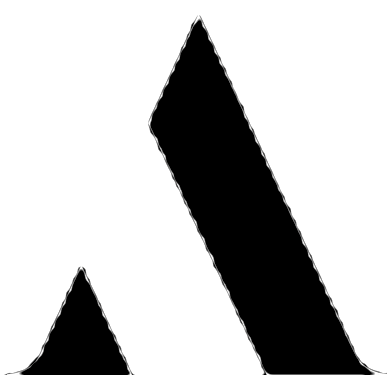A wine tour of Western Australia

(Photo by Marianna Massey/Corbis via Getty Images)
Australian Chardonnay rolled out in Britain in the late eighties. We all loved it then. It was a great fat baby, pomaded in vanilla, butter and caramel, all derived from its maturation in new-to-newish oak casks, or simply from stewing the wine with a handful of oak chips. On the palate it was a fruit salad: melons, peaches and apricots, or even better, something tropical such as mangoes, guavas or passion fruit. It finished off with lots of cream, and more butter. As one of our Octagon group of wine writers put it at the time, “Australian Chardonnay is the new Liebfraumilch, but Lieb is only seven or eight per cent alcohol, where Ozzie Chardonnay is thirteen or fourteen and gets you there twice as fast.”
In truth it wasn’t sweet like Liebfraumilch, but it did taste that way, probably because there was a lot of sweet-tasting glycerine in the wine, and the acidity was so low.
Of course he was talking about the mass-produced stuff that had been made from fruit brought in from all over South-Eastern Australia and crushed in huge juicing plants on the Murray River and elsewhere. There were plenty of places even there that made good Chardonnays, but they came at a higher price.
I must confess I fell out of love with Australian Chardonnay quite quickly. My trip to Australia in the spring of 1990 didn’t help. I must have tasted oceans of it. In one place in Victoria the winemaker showed me how you could use selected yeasts to inject flavour into the wine. One vat tasted of melons, the next of apricots, etc. This wasn’t so much winemaking as chemistry.
I wasn’t in Australia first and foremost to taste Chardonnay, and I missed out on two obvious places for cool-climate wines where I might have met the best examples: Tasmania and Western Australia, Margaret River in particular. In Tasmania, Andrew Pirie at Piper’s Brook was going great guns, but Margaret River was still pushing out the full range of wines from Cabernet to Chardonnay via Sauvignon Blanc. Reputations had already been formed but possibly only Leeuwins was famous for its Chardonnay. They led the pack, followed by Cape Mentelle, Château Xanadu, Cullens, Evans & Tate and Moss Wood. Vasse Felix was still best known for its Cabernet.
Margaret River is a peninsula in the left-hand corner of Australia about 330 kms south of Perth. It is notably cool and most bracing on the south coast. Average temperatures during the growing season don’t go much above 20 degrees Celsius. There is no high ground to speak of, the loftiest ridge rising to some 200 metres. Soils are a mixture of limestone and gravel with some terra rossa. Growers started putting down Chardonnay in 1975, but chose the odd and controversial Gingin clone which had been developed north of Perth. Gingin is chiefly famous for its poor fruit setting which produces berries of varying sizes, but it is possible that it also gives Margaret River Chardonnay the edge over many of its rivals as it has a character all of its own.
Last month I did a Zoom tasting of six Margaret River Chardonnays presented by my colleague Tom Cannavan and featuring two winemakers from the region: Virginia Wilcox from Vasse Felix and Steve James from Voyager.
We had samples of wines from 2018 and 2017, kicking off with 2018 Thompson Estate: £24 from Peatling — and the cheapest wine we tasted that morning. It was the first Margaret River Chardonnay I had tasted for some time, and I was struck by how lean it was. Chardonnay will put on weight with time, this was very pale and nervous with some apply fruit. Like many of the wines that morning it left an aftertaste of rhubarb.
The 2018 Flametree SRS Wallcliffe (£34.99) had a little red fruit character which I couldn’t quite put my finger on, like a little nuance of raspberry. It was made from 25-year old vines and like the Thompson wine the acidity was notable. Once again it left an impression of rhubarb.
Vasse Felix was represented by its 2018 Heytesbury cuvee (£43.50 from www.farrvintners.com). This had quite a wild, cider-like attack but an excellent structure and length. It was flinty, with Chablis being the obvious model. Once again there was a smidgen of rhubarb. When we were asked to vote on our favourites, I, like 45 per cent of the forty or so tasters, thought this the best.
We moved onto the 2017s with McHenry Hohnen Hazel’s Vineyard (£30 from www.ozwines.co.uk) a bio-dynamic wine made from 100 per cent Gingin Chardonnay. This was a year older and for that reason perhaps a little plumper, not all elbows and knees like the first three. There was a little of that red fruit/raspberry character. Proximity to the southern sea was meant to give it a saline taste. This wine grew on me, so by later that evening when I drank the last few drops, it had become my favourite.
Now came the 2017 Voyager Estate MJW (£59.95 from https://www.greatwineestates.com) another bio-dynamic estate five or six kms from the coast that rises to the dizzy heights of 90 metres. Once again there was the red fruit nose with a complex palate and an overwhelming cooling impression.
The last of the wines was the 2017 Xanadu Reserve (apparently no longer a château — £55 from www.ozwines.co.uk) which is also close to the sea. This appeared closed, and there was a bit of CO2 gas in the wine. It is obviously meant to age for several years yet. It seemed stripped back to the point of austerity but it left me with a little taste of gooseberries.
Back then in 1990, if Australian Chardonnay had a model it was the fatter wines, the Meursaults of the French Côte d’Or. Now it is certainly flinty Chablis. Rather than lacking acidity, acidity has become the benchmark. There was no butter and very little in the way of tropical fruits. I think that if anyone mentioned fat babies now, they’d be asked to leave the room.
A Message from TheArticle
We are the only publication that’s committed to covering every angle. We have an important contribution to make, one that’s needed now more than ever, and we need your help to continue publishing throughout the pandemic. So please, make a donation.





